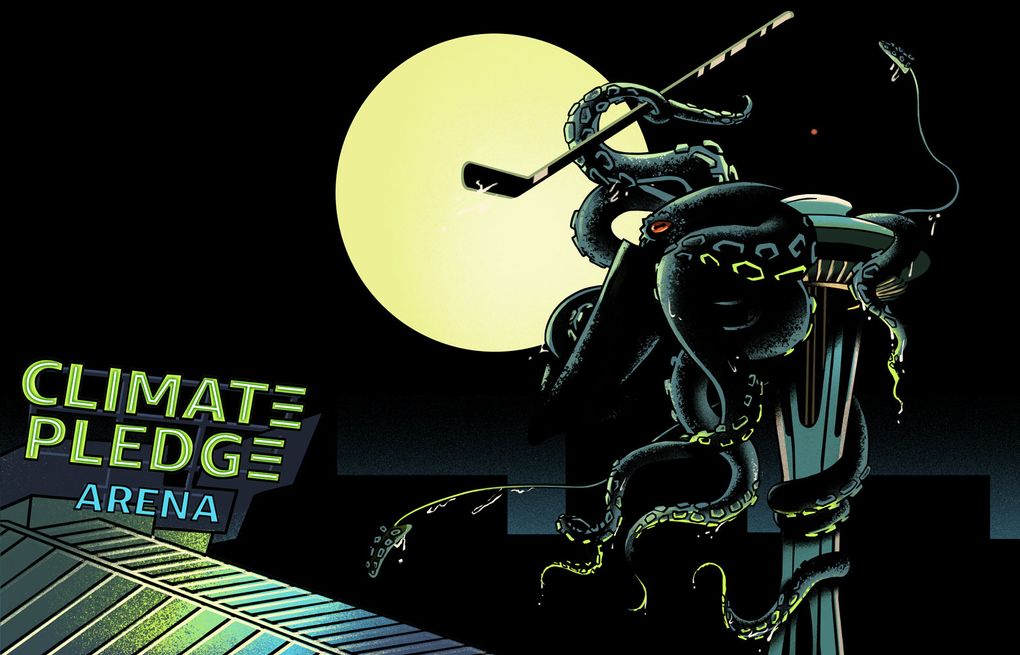The Kraken became a leader in the hockey analytics community before it was even close to fielding its inaugural team.
While several teams throughout the NHL navigate a landscape where deeper analytics have heightened importance, the Kraken has spent the past two seasons preparing for this one behind a bulked-up staff.
Alexandra Mandrycky was hired as the Kraken’s director of hockey administration before a general manager was even hired, and then she brought in former Philadelphia Eagles qualitative analyst Namita Nandakumar and NBA graduate intern Dani Chu, and then a lot of others.
It’s a stacked staff, with the Kraken investing more on the analytical side than almost any NHL team. But what are the staffers analyzing? For a lot of them, it’s the amateur side for entry drafts and the like, while others analyze other NHL teams, and the Kraken itself.
For those new to hockey — or just to hockey analytics — understanding what they’re analyzing can be daunting. Here’s what new Kraken fans might want to know about what the analytics staff looks at from a basic level.
Key hockey analytics
Corsi: Developed by former Buffalo Sabres goalie Jim Corsi, this stat essentially analyzes how valuable a player is based on how many shots for his team or against his team are taken while he is on the ice during even strength, five-on-five play. This accounts for shots blocked or defended against as well. It’s a barometer for how often a team has the puck when a specific player is on the ice.
Expected goals for: This is a probability stat, essentially the chances of a goal scored based on all unblocked shot attempts from a team or individual player. There is also an expected-goals-for percentage, which takes previous shots into account. The higher this percentage, the more likely a goal will be scored with this player on the ice.
Zone starts: This stat tracks how often a specific player begins a shift in a zone during a faceoff. When a player is on the ice for a faceoff in the offensive end, that’s an offensive-zone start, and there are defensive and neutral zone starts. Often, players who struggle on the defensive side won’t earn the tougher, more grueling defensive-zone starts. It’s a good gauge for how much a team trusts a player in big situations.
High danger scoring chance percentage: This is basically two stats, with high danger scoring chances being any scoring chance that has a higher probability to end in a goal. A scoring chance is a shot taken from areas of the ice where goals are more likely; shots inside that area of the ice are assigned a 1, 2, or 3 to indicate how dangerous. Anything ruled a 3 is a high-danger chance; any rebound shot within three seconds of a block or save attempt adds a point to this scale. Any shot with a 2 is deemed a scoring chance. High danger scoring chance percentage is the value of how often a shot from a specific player qualifies as a high-danger chance.
How the Kraken picked its team
Because the Kraken has a strong analytics office, it emphasized that when selecting its team, especially while opting for a less expensive roster. Think of it like hockey “moneyball” without the pretentious connotations.
Teams didn’t leave their best players available to the Kraken in the expansion draft, so they used analytics to get creative and determine the best players they could get.
Joonas Donskoi, selected from the Avalanche, had the highest Corsi percentage of any Kraken player in the league last season, ranking 49th of all players who played at least 200 minutes. He produced a 55.98 Corsi by percentage, one-tenth of a point below Hurricanes star forward Sebastian Aho.
Jordan Eberle ranked 52nd in the league at 55.80, and Jared McCann 83rd at 54.66.
The Kraken player with the highest expected-goals-for percentage last season (based on players with at least 500 minutes) was Donskoi, who ranked 10th in the league at 68.18%. Carson Soucy, a defenseman selected from Minnesota, was 12th in the league at 67.24, and Calle Jarnkrok, selected from Nashville, was 28th at 63.64.
Yanni Gourde had the highest high-danger chances by percentage for Kraken players last season, ranking 43rd in the league at 57.65.
Resources
Some great hockey analytics websites to follow stats during the season are Natural Stat Trick and Evolving Hockey, where data was compiled from for this story.
Source : From the Web
